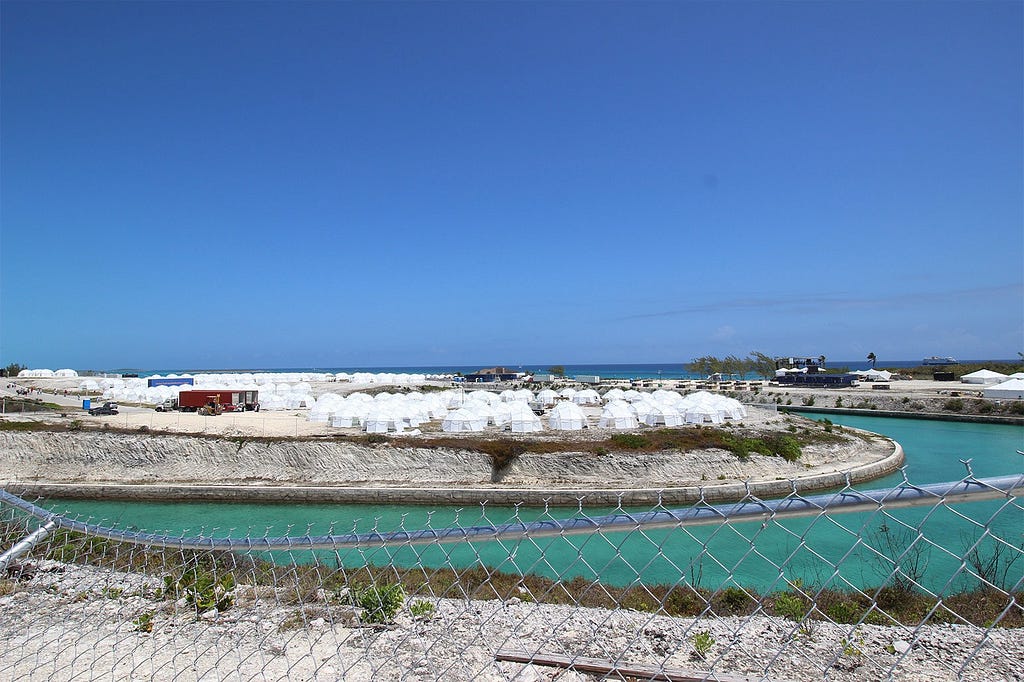You are no doubt hearing it in dining halls or whispered in libraries across campus since returning from break: “Have you seen the Fyre docs yet?” To those of you living under rocks (who is delivering your Herald, pray tell?), streaming titans Netflix and Hulu both released documentaries this January on the notorious catastrophe of 2017: the Fyre Festival. (Hulu, knowing Netflix’s release date, dropped their doc four days before.) This past Sunday, my friend convinced me to watch the Netflix doc, and as it began, she reminded me that Hulu had also dropped a 90-minute doc. “Yeah but there’s simply no way I’m watching back-to-back documentaries on this ridiculous phenomenon,” I spat with disdain. Three hours later, I had made myself a liar. What can I say? I couldn’t look away. These documentaries were like…well, like something on Fyre (I’m sorry).

The basic story is this: Billy McFarland, “entrepreneur” of dubious origins, somehow convinced rapper Ja Rule to launch an app through which regular shmoes could book high-level talent for events. You want The Black Eyed Peas at Daniel’s Bar Mitzvah? No? It’s not 2009? Okay, well pretend you did. Look no further than the Fyre app. That was the pitch. Some genius in the marketing department of this app suggested the festival as a promotional stunt and Billy ran with it. All the way to the Bahamas. I won’t say more because I’m recommending you watch both — yes both — documentaries. Here’s why:
The Netflix doc, Fyre: The Greatest Party That Never Happened, is flashier. It’s about how the festival fell apart. It revels in Billy’s failure. How did this happen, you ask? Netflix will tell you. How could this happen? Hulu’s Fyre Fraud will tell you. Hulu is more concerned with the sociocultural landscape that allowed for this kind of scam. They interview more journalists than Fyre employees. And they’re more concerned with Billy’s psyche. This is one of the starkest contrasts between the two docs because Hulu managed to get Billy (and his model girlfriend) to appear in the doc. Now before you decide that this is a huge selling point, be warned: Billy doesn’t actually say much. Rather than getting the scoop from Billy, they use him as a tool against himself in order to demonstrate just what an irredeemable pathological liar he is. He’s indefensible, but we don’t need Hulu smashing us over the head with his sociopathy to know he’s the villain. We obviously know he’s the villain. What the Netflix documentary does so well, whether it means to or not, is show that everyone else — the putzes who went along with it all — are guilty too.
In the Hulu documentary, they ask a marketing guy who he thinks is guilty. Everyone, he says. Yeah, no shit. The twist is that the Netflix doc was in part produced by the media team that worked on the festival (Jerry Media, yes the company spawned from the Instagram @fuckjerry). They may have been in it to defend themselves (we were victims too!), but they end up looking like destructive morons more than anything else. In the Netflix documentary, no one really takes on accountability, but more than one interviewee says, “At this point, he was either an idiot or the smartest guy in the room.” Isn’t that all we need to know about who was complicit?
So watch Fyre: The Greatest Party That Never Happened to get the nuts and bolts of what happened. Then watch Fyre Fraud to get the more academic breakdown. But be prepared to have Fyre nightmares after the binge. Because the story of Fyre isn’t just a hilarious one about rich millennials getting scammed out of their parents’ money. It’s the story of just how much a white man with a little knowledge of startup culture, a smidge of social media clout, and a dream can burn down with his Fyre.
Fyre in the Hole was originally published in The Yale Herald on Medium, where people are continuing the conversation by highlighting and responding to this story.
